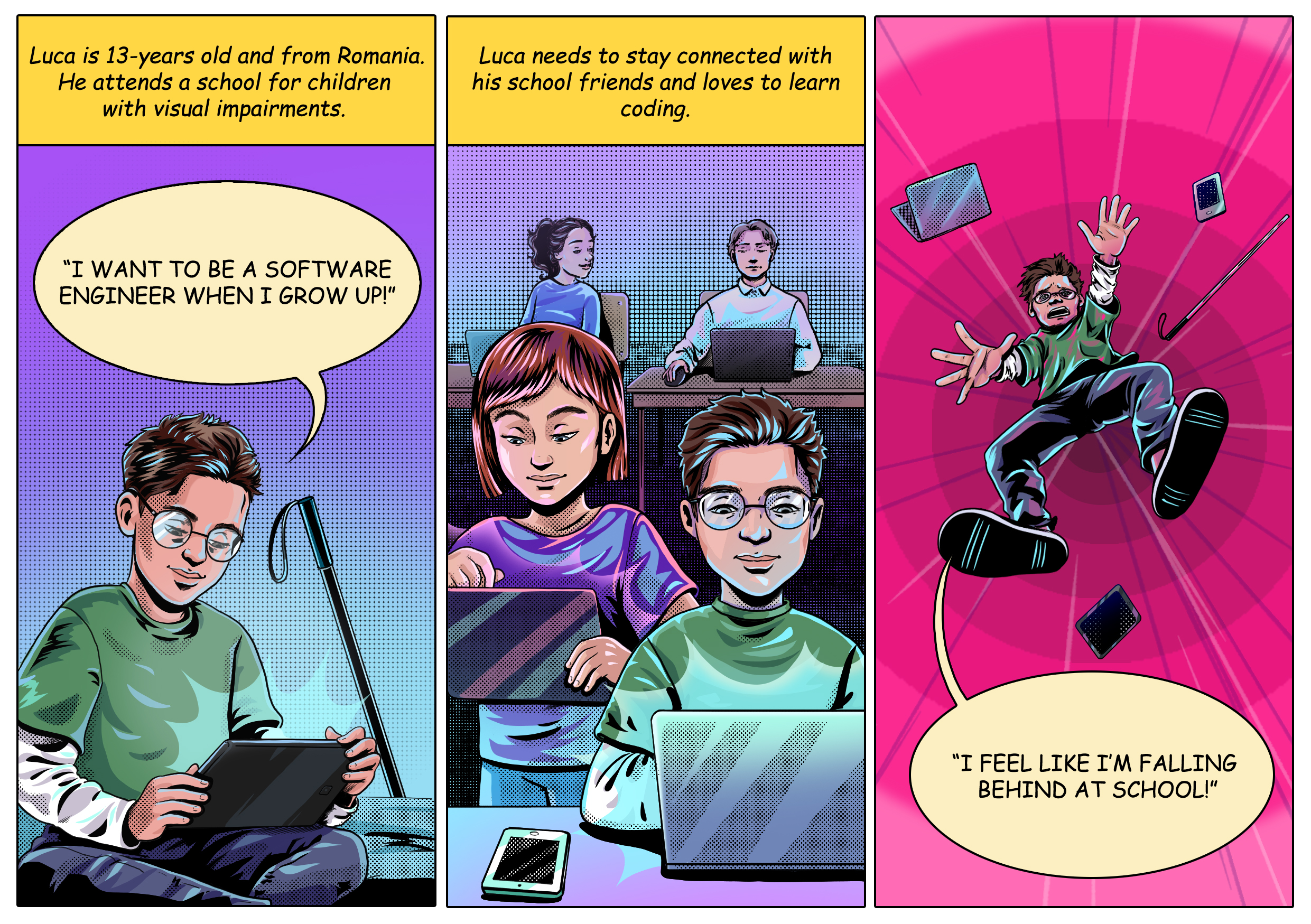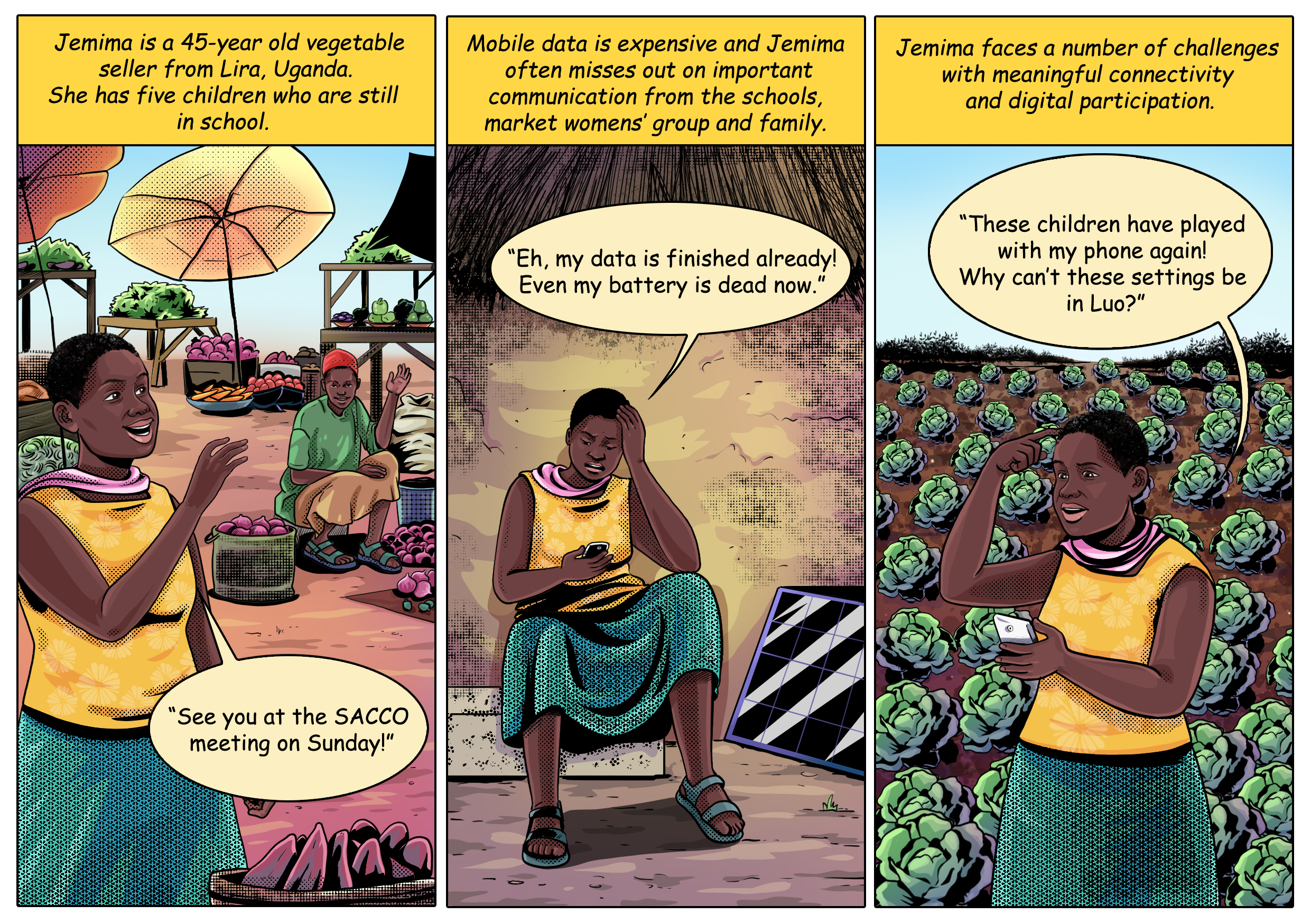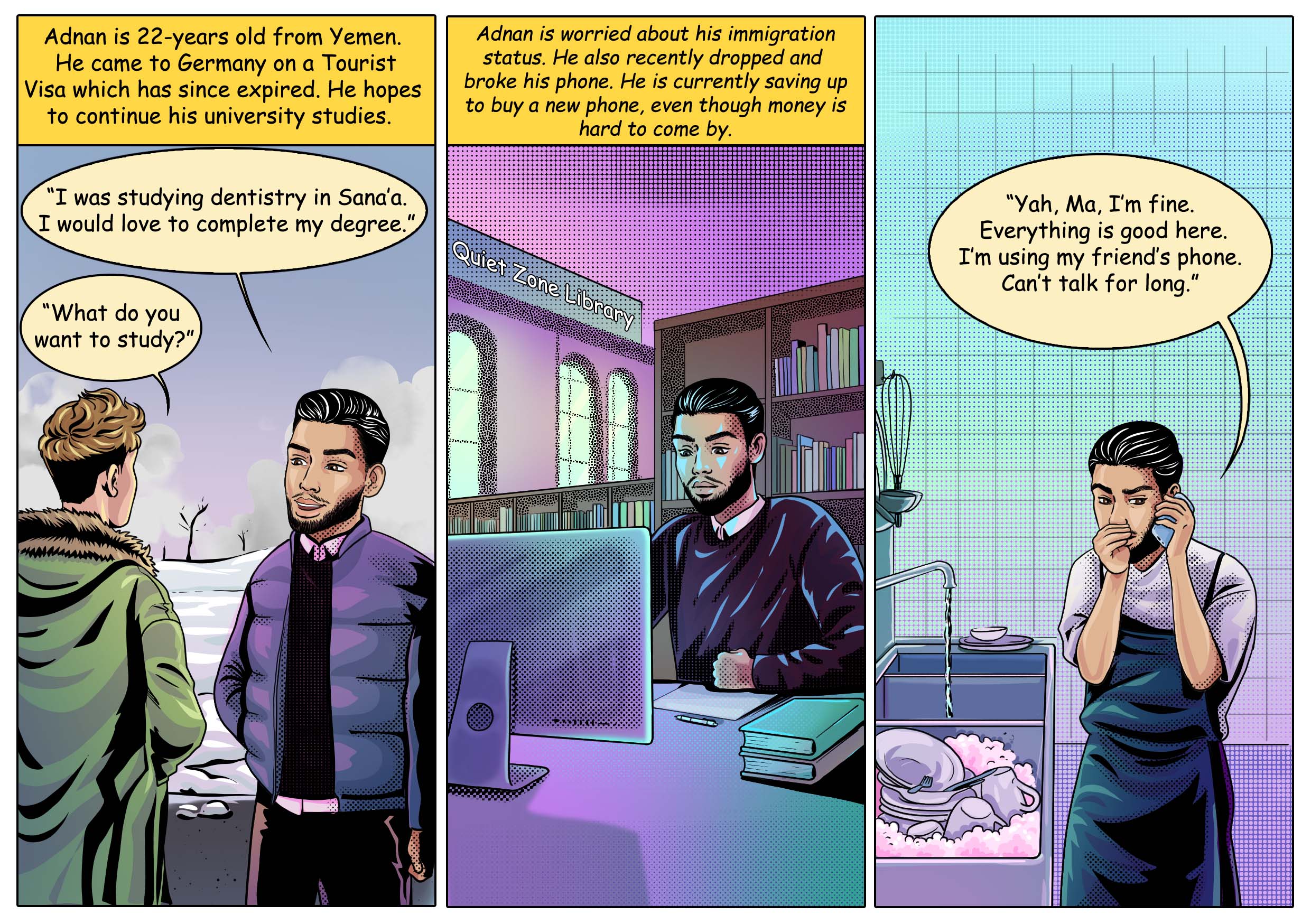- “Inclusion, Not Just an Add-On” is a guide to help foster diverse perspectives in building systems for the future.
We believe it’s crucial to design technologies in a way that’s accessible and inclusive to everyone. Today, we’re releasing the guide “Inclusion, Not Just an Add On” with Pollicy, an award winning feminist collective whose core focus is inclusion in the digital world.
The guide serves as an exercise in thinking about diverse perspectives and needs of unique individuals when developing programs, policies and platforms. It addresses the need to reimagine technology designs to address emerging needs of minority communities.
Through individual persona stories, the guide addresses different digital challenges people can face and provides potential solutions to overcome them. Using four key frameworks, Privacy-by-Design, Accessibility-by-Design, Gender-by-Design and Safety-by-Design, the guide walks technologists through the process of developing products and policies that consider the complex needs of marginalized persons across the world.
“At Pollicy, we are deeply invested in a digital future that takes into account the different experiences, needs and challenges of people who might have been previously excluded from a seat at the table when designing the platforms that control our every day lives today. We are at a critical point where we need more thinking and research in designing a technological future that is equitable, fair and just and we hope that this guide is one small step in that direction”.
– Neema Iyer, founder at Pollicy
Connecting the world takes people with different backgrounds and points of view to help build products that work better for everyone. Below are three of the personas featured in the guide.
Persona 1:
Luca is a 13-year-old boy from Romania who has lived his entire life with significant visual impairment.Through his story, we explore how Accessibility-By-Design is useful when designing technology that does not have barriers for Persons living with Disabilities.
Persona 2:
Jemima is a 45-year-old vegetable seller from Lira, Northern Uganda. Through her story, we explore digital challenges like poor connectivity, high data costs and misinformation, and offer ways to design technology that takes into account her unique context.
Persona 3:
Adnan is a 22-year-old Yemeni refugee living in Germany. Through his story, we navigate challenges that vulnerable populations face with technology, and offer strategies for inclusive design for people facing challenges similar to his.
The guide includes key recommendations to consider when developing technology policies and products for a rapidly changing global community:
- Accessibility: Consider that different people perceive and encounter different barriers and constraints when using technology, and design systems that match their needs.
- Inclusion: Consider that people using your products are diverse, and embrace design choices that appreciate the full range of human diversity.
- Localization: Consider that people from different parts of the world feel valued when products mirror their realities and are culturally adaptive.
- Non-discrimination: Ensure that you offer fair and unprejudiced treatment of people, and that benefits are evenly and equally distributed
- Collaboration: Acknowledge that people are experts over their lived experiences, and that partnering with them enriches their experiences on platforms.
Report Link: https://pollicy.org/resource/inclusion-not-just-an-add-on/





